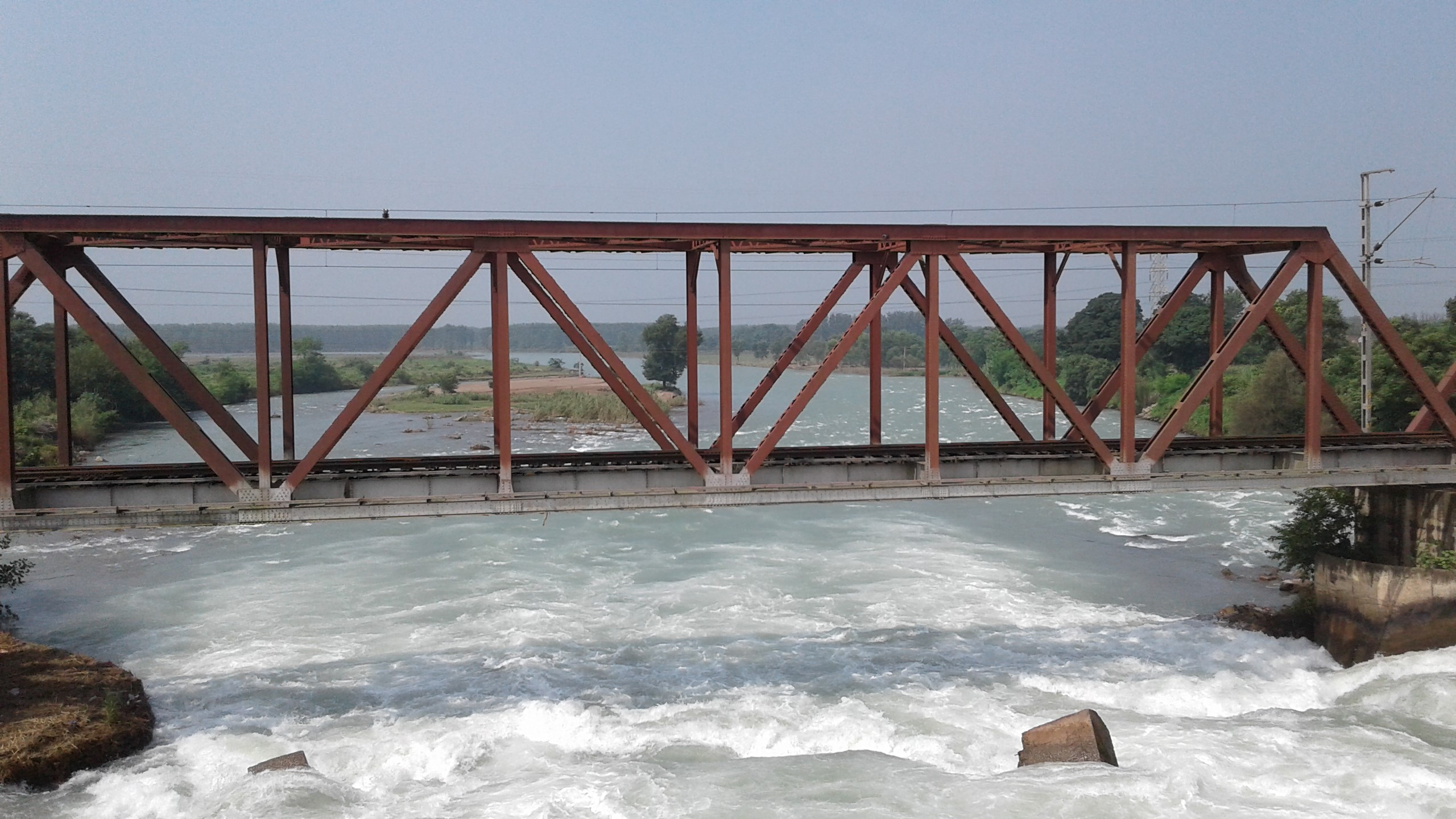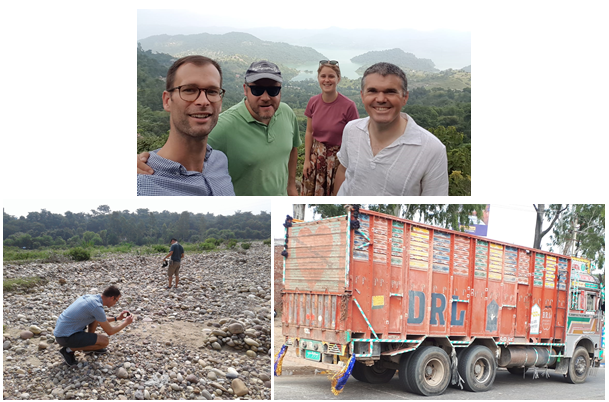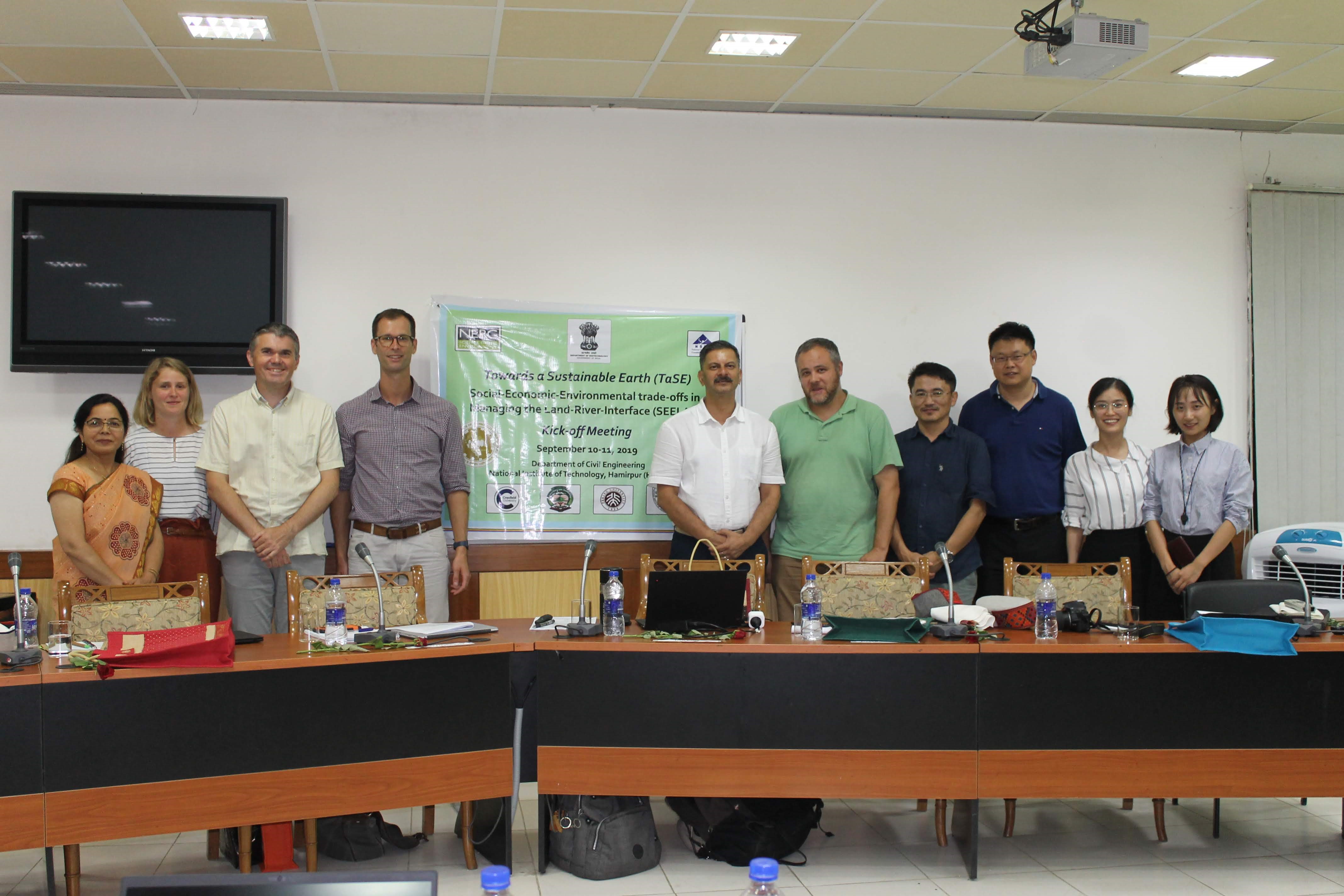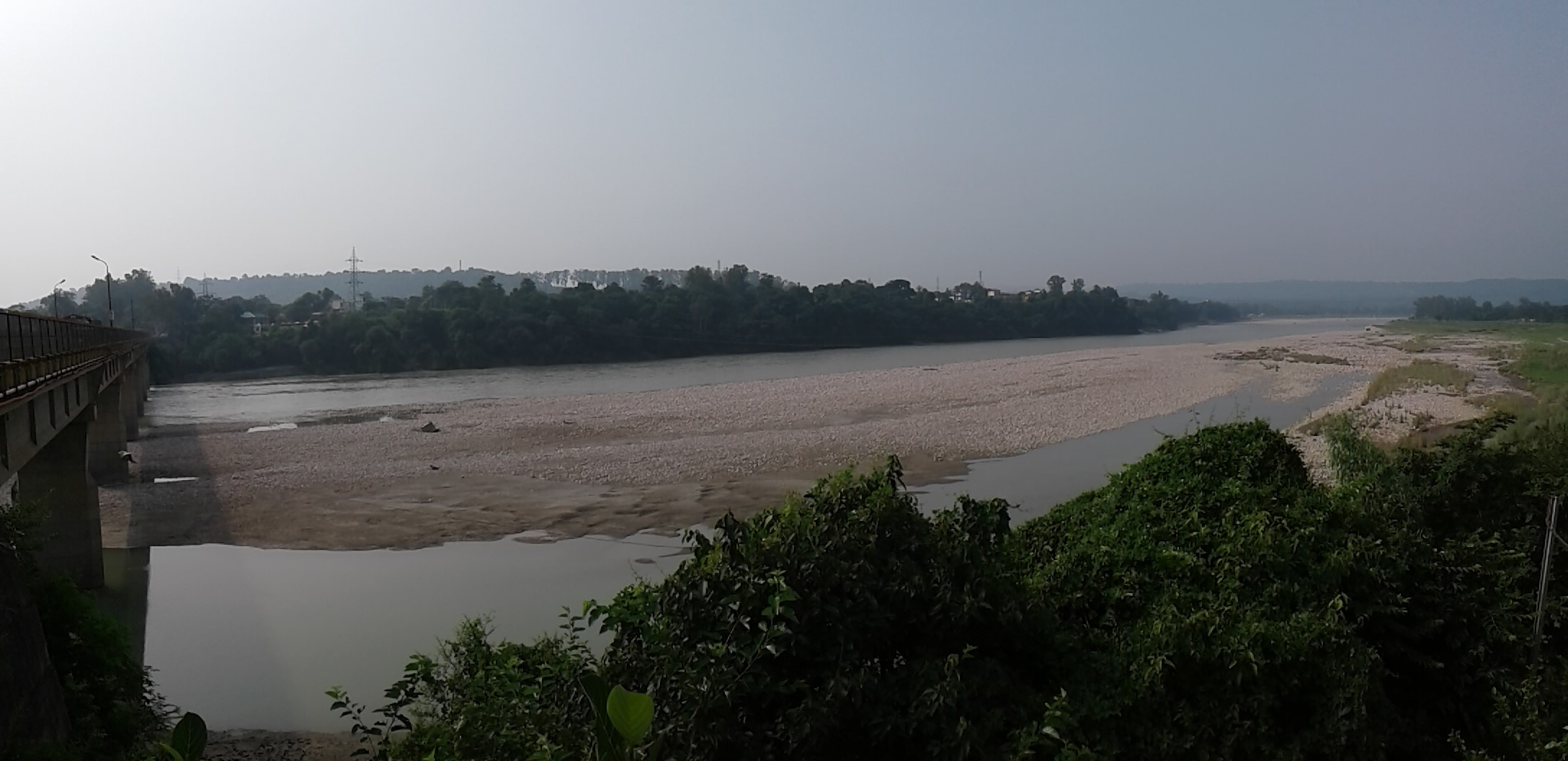Rivers connecting countries and people in India
20/09/2019

Imagine: You’re a taxi driver in India and you pick up four Europeans from the airport for a trip to the foothills of the Himalaya. You quickly learn that whenever the car crosses a bridge, your passengers start to take pictures of the river below. Sometimes, when it’s a large river, they even ask you to stop so that they can better enjoy the view or even set foot on a dry riverbed. Four days long, you drive around with them, looking at rivers, across the plains of Punjab into the hills of Himachal Pradesh. Being a taxi driver, you sure have seen stranger things… But still, you wonder: what were they doing?

We, those four passengers, were researchers from Cranfield University, travelling to Hamirpur National Institute of Technology (NIT) in India to attend the kick-off meeting of the research project “Social-economic-environmental trade-offs in managing the land-river interface” together with our Indian and Chinese colleagues. So yes, you guessed it right, the project is about rivers; the Sutlej and Beas Rivers.
In general, rivers and the land that surrounds them are focal points of economic activity and development in most countries. However, they are rarely managed in a holistic manner. Institutional boundaries, socio-economic drivers and barriers, and complex interactions in environmental processes limit severely our ability to integrate policies across the Land-River-Interface (LRI). As a result, management decisions often have unintended social, economic, cultural and environmental consequences locally and further upstream/downstream in the catchment. The aim of this NERC-funded project is to investigate how management causes trade-offs for people and the environment at different locations and times to support the design of integrated solutions.
So, after a trip along winding roads scattered with people, cows, monkeys and colorful lorries, we were warmly welcomed by our Indian colleagues in Hamirpur with a traditional opening ceremony to kick-off… well, the kick-off meeting. During the meeting itself, we discussed our needs, ideas and plans for each work package (i.e. pieces of the research allocated to the research teams according to their respective expertise), as well as how to best plan the research to optimally make use of local resources and integrate our work towards achieving the aim and objectives of the project.

But perhaps more importantly, we also went on a fieldtrip to explore our study catchment. Before going on this trip to India, we extensively studied historic maps and spatial data on the Sutlej and Beas Rivers, so we already had a good idea about the local geography. But only when seeing these grand rivers and their valleys with our own eyes, we were able to fully appreciate the overwhelming size and meaning of these rivers for people and environment. The roaring waters of the Sutlej-Beas river system connect three countries, originating in the Tibetan plateau in China, flowing through the Himalaya and plains in northeast India, to eventually join the Indus River in Pakistan. Along the way, its water passes numerous dams and generates electricity, continuously transforms the landscape, irrigates crops, provides drinking water, maintains fish populations, creates unique ecological habitats, provides leisure spaces, and bares important spiritual and cultural meanings. However, during our trip we also witnessed the signs of how these waters can threaten livelihoods, flood villages, damage roads, and carry huge sediment loads across the landscape. Even though we could only see a fraction of the rivers during our trip, these snapshots were enough to confirm this piece of the world is a very fascinating place with many complex dynamics between environmental processes and human activities, making the Sutlej-Beas land-river interface a critical area for sustainable development. So now that we have kicked-off, we’re diving right in it. Keep posted for some exciting river stories in the future!


Categories & Tags:
Leave a comment on this post:
You might also like…
Keren Tuv: My Cranfield experience studying Renewable Energy
Hello, my name is Keren, I am from London, UK, and I am studying Renewable Energy MSc. My journey to discovering Cranfield University began when I first decided to return to academia to pursue ...
3D Metal Manufacturing in space: A look into the future
David Rico Sierra, Research Fellow in Additive Manufacturing, was recently involved in an exciting project to manufacture parts using 3D printers in space. Here he reflects on his time working with Airbus in Toulouse… ...
A Legacy of Courage: From India to Britain, Three Generations Find Their Home
My story begins with my grandfather, who plucked up the courage to travel aboard at the age of 22 and start a new life in the UK. I don’t think he would have thought that ...
Cranfield to JLR: mastering mechatronics for a dream career
My name is Jerin Tom, and in 2023 I graduated from Cranfield with an MSc in Automotive Mechatronics. Originally from India, I've always been fascinated by the world of automobiles. Why Cranfield and the ...
Bringing the vision of advanced air mobility closer to reality
Experts at Cranfield University led by Professor Antonios Tsourdos, Head of the Autonomous and Cyber-Physical Systems Centre, are part of the Air Mobility Ecosystem Consortium (AMEC), which aims to demonstrate the commercial and operational ...
Using grey literature in your research: A short guide
As you research and write your thesis, you might come across, or be looking for, ‘grey literature’. This is quite simply material that is either unpublished, or published but not in a commercial form. Types ...






